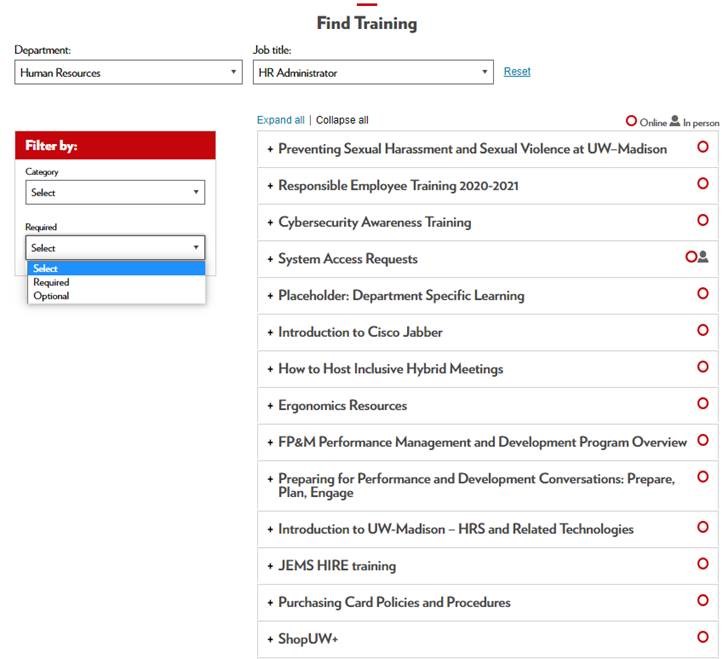Throughout the pandemic, many units across campus continued to hire new employees to meet operational needs. The pandemic required thinking differently about how to onboard employees virtually. Onboarding teams considered new ways to ensure employee access and technology and to complete essential documentation—all while helping employees to feel welcome during this unprecedented time.
Now that UW–Madison has reunited campus in our fall semester, units are once again reimagining what onboarding might look like for new employees, and how onboarding strategies might be used to re-onboard all staff.
We asked some of our units to share what they did during the pandemic to onboard their employees, what lessons they learned that informed new practices, and what they’re doing to take into consideration existing employees’ re-onboarding needs.
School of Nursing
The School of Nursing (SoN) hired a few new employees throughout the pandemic, most of whom worked remotely (except for some faculty who were hybrid). As campus reunited, most SoN employees returned to on site this fall. Heather Mace, Administrative Affairs Executive Assistant and Onboarding Coordinator, worked over the past 18 months to make things easier on new employees as well as herself, in anticipation of being back onsite.
When COVID first hit, the SoN building was in strict lockdown, and employees had to have specific reasons to be onsite, with express permission to go in. During that time, Heather took photos of new employees’ offices and emailed them the pictures so they knew what to anticipate when onsite. New employees were also provided with a link to a virtual building tour that was created by School of Nursing’s Facilities Department.
If a new employee needed a laptop to use for work (e.g., didn’t have a home computer, or preferred a designated work computer for connecting remotely to the server with VPN), Heather set up an appointment to arrange for equipment transfer. If meeting an employee onsite, she processed the I-9s and made sure they got their keys. She showed them their office and offered a building tour if they were interested and comfortable doing that. The tour made it easier for new employees to return on their own to get supplies and mail without getting lost in the building.
Now that SoN employees are reunited on campus, Heather ensures that keys are given to those who have never been in the building and meets with them to show them where their offices are. She also checks in with employees to ask how they’re doing—either by email or by swinging by offices. When onsite, she ensures that employees remember where things are, and asks if there’s anything they need.
Heather is aware that there is anxiousness around being back onsite. To alleviate this, she offered employees opportunities to come over the summer, prior to the full return, to offer give tours in smaller groups or one-on-one. She hoped that offering this helped to ease some of the stress and anxieties for newer employees.
Now that most employees are fully back onsite, she’s been communicating with employees that they can always come to her with questions. Despite that some employees may have been hired over a year ago, they weren’t in-person and may have questions that didn’t arise when working at home. Heather says her door is always open.
Division of Enrollment Management
In the Division of Enrollment Management (DEM), onboarding coordinators HR Manager Ann Bradshaw and HR Specialist Paula Gates coordinated shifting to remote onboarding practices at the start of the pandemic. In an effort to make new team members feel connected to their workplace, they provided ongoing communication via emails and monthly newsletters, which also go to all staff. The DEM Administration Updates Newsletter, for example, provides information and reminders regarding HR, payroll, benefits, purchasing, travel, internal trainings, testing, uploading vaccination records, position openings, new hires, and departures. The DEM Updates Newsletter, in contrast, highlights what’s happening within DEM units; opportunities to learn about diversity and social justice; important enrollment dates and registration or financial aid deadlines; and welcomes new team members to Enrollment Management. Ann and Paula continue to use these tools in the hybrid work environment.
As DEM employees reunite and re-onboard, different areas in Enrollment Management are doing different things to make employees feel comfortable and welcome:
- The Office of Admissions and Recruitment decorates cubicles for all new team members who were hired during the pandemic and have never set foot in the office. When they get to their workspace for the first time, they see a welcome sign, along with some fun stuff such as a Bucky Badger toy, slinky and a bell.
- Paula and her team offered I-9 verification and reverification for those hired during the pandemic at the beginning of the semester, as well as computer equipment pick-up for remote team members. Beverages and individually wrapped snacks were provided to welcome new team members.
- Office of Admissions and Recruitment team members who returned to onsite work received “Welcome Back” signs at each entrance, new apparel and masks at their desks, and free snack/drink options in the kitchens.
- Some teams within units are fostering reconnection and community building by hosting small-scale in-person meals, for example.
- Other areas are creating new calendars so that team members know when folks are onsite or working remotely.
- The Office of the Vice Provost for Enrollment Management coordinated with UWPD to host mask de-escalation trainings for DEM team members who work with large events on campus. These trainings provide guidance for what to do when encountering situations in which a guest refuses to wear a mask.
- Finally, The DEM Wellness Team is offering Social Comfort Wristbands to employees returning in-person. These are optional wristbands, available in three colors to signify team members’ comfort level with social interactions:
- Green – Handshakes & High Fives Approved
- Yellow – Elbows Only
- Red – Greet from Six Feet

- They are also providing signs that team members can print, cut-out, and affix to their door or cubicle wall as well.

Facilities, Planning & Management
Since March 2020, Facilities Planning & Management (FP&M) has hired numerous employees, some of whom were essential employees working onsite and some who worked remotely. Because FP&M’s employees are distributed across campus, the virtual process for New Employee Orientation that was put in place during the pandemic has continued—but orientation may return to in person later this fall.
- The switch to virtual orientation at the start of the pandemic took a lot of coordination, including making sure that NetIDs were activated early and that employee information was sent to supervisors in a timely and accurate way. Onboarding coordinators Lisa Raetzman and Mike Loggie ensure this happened by increasing email communication and setting up calendar invitations in advance. They realized that since interviews were done via Webex, keeping orientation on that platform made sense since most new employees were already familiar with how to use it.
- The Onboarding team has also worked with FP&M’s Marketing/Communications team to create a series of automated “checkpoint emails” that new employees receive at critical points during their first year. These are task-based emails that share information and links to resources that are relevant for the period of time in which employees receive them. In the first few weeks, for example, there are links to payroll, benefits and transportation information as well as an introduction to the Inside FP&M website. In employees’ second and third weeks, they’re reminded of resources for their 30-Day goal setting conversation. After the first month, employees are encouraged to focus on ways they can connect within FP&M and the larger UW community and to build technology skills.
- FP&M also created a new online tool to help increase visibility and accessibility regarding required and recommended training for employees. This has been an ongoing effort that was initiated during the pandemic. Training & Organizational Development Specialist Kayla Ruplinger created the tool with colleague, Training & Organizational Development Manager Alicia Meyer in partnership with Communications & media Specialist Jake Stottler. The goal, Kayla says, is to ensure access to learning paths and career options. She and Alicia do this by providing visibility to required and optional learning specific to employee positions.
- Kayla and Alicia also created the ability to view training requirements for other positions to support overall career growth. All FP&M training courses are connected to one of FP&M’s “criteria for success,” which encourages employees and supervisors to connect learning to PMDP development conversations.
- Finally, they also hold kickoff meetings with all hiring supervisors to help them learn how to engage with and use these new resources. The Position Specific Training Tool is relatively new, so they ask their supervisors to help them build out the tool with relevant training and resources at a more department level.

Lisa Raetzman says that FP&M will continue utilizing practices that were first put into place during the pandemic to support their employees as campus continues to reunite. These include holding supervisor update meetings every other week to cover HR updates as well as sending a divisional newsletter—which covers a variety of topics including updates, policies, and internal new hire/promotion/retirement announcements—every two weeks.
In Summary
There won’t be a one-size-fits-all solution across campus. The article, ‘Re-Onboard’ Staff to Return to the Office or Continue Working Remotely provides four distinct levels of onboarding process that can be used as guiding principles to provide support, certainty and clarity to current and new employees as part of a reuniting plan. These four levels are: Compliance, Clarification, Culture, and Connection.
Check out the article to learn more about these levels of onboarding, as well as four changes in the workplace that will inform our onboarding approaches.